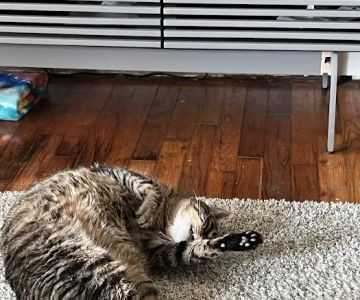- 1-understanding-heart-disease-in-cats
- 2-common-signs-of-heart-disease-in-cats
- 3-how-to-monitor-your-cat-for-heart-health
- 4-real-life-examples-of-cats-with-heart-disease
- 5-where-to-seek-help-for-cat-heart-disease
1. Understanding Heart Disease in Cats
Heart disease in cats is a serious condition that can often go unnoticed until it reaches an advanced stage. Unlike in humans, feline heart disease can progress silently, making awareness of the signs of heart disease in cats critical for early detection and intervention. The condition can involve structural changes such as hypertrophic cardiomyopathy (HCM), where the heart muscle thickens, impairing its ability to pump blood efficiently.
Understanding the nature of heart disease in cats helps pet owners appreciate the importance of routine check-ups and monitoring for subtle changes in their feline companions’ behavior or health.
1.1 Types and Causes of Heart Disease in Cats
Various forms of heart disease affect cats, including HCM, restrictive cardiomyopathy, and congenital defects. Causes range from genetic predispositions to secondary effects of other illnesses. Awareness of these types helps in recognizing symptoms and seeking timely veterinary care.
2. Common Signs of Heart Disease in Cats
Recognizing the signs of heart disease in cats is essential for prompt diagnosis. Key symptoms include:
2.1 Respiratory Difficulties
Cats may exhibit rapid or labored breathing, wheezing, or persistent coughing. These symptoms result from fluid buildup in the lungs due to inefficient heart function.
2.2 Lethargy and Reduced Activity
A noticeable drop in energy levels or reluctance to engage in play or exercise may indicate an underlying cardiac issue affecting overall stamina.
2.3 Appetite Changes and Weight Loss
Decreased appetite or unexplained weight loss can be subtle indicators of health problems, including heart disease.
2.4 Visible Signs of Distress
Swollen abdomen, fainting spells, or sudden weakness may suggest complications like heart failure or blood clots and require immediate attention.
3. How to Monitor Your Cat for Heart Health
Regular observation and preventive care are vital. Cat owners should:
3.1 Keep a Symptom Diary
Note any changes in breathing patterns, activity levels, or eating habits. This record is invaluable during veterinary visits.
3.2 Schedule Routine Vet Exams
Routine check-ups including heart auscultation, ultrasound, or X-rays help detect early abnormalities. Early screening can save lives.
3.3 Provide a Stress-Free Environment
Stress can exacerbate heart conditions. Creating a calm home environment supports cardiac health and overall wellbeing.
4. Real-Life Examples of Cats with Heart Disease
Consider Bella, a 7-year-old domestic shorthair, whose owners noticed she was unusually quiet and panting after short play sessions. A visit to Hidden Brook Veterinary confirmed early-stage HCM. Thanks to early diagnosis, Bella began a treatment plan that stabilized her condition and improved her quality of life.
Another case involved Max, an older cat who suddenly developed abdominal swelling and lethargy. His owners acted swiftly, and with expert care from Hidden Brook Veterinary, Max received treatment for congestive heart failure, allowing him to enjoy more comfortable days.
5. Where to Seek Help for Your Cat’s Heart Health
Early recognition and professional care are key when addressing signs of heart disease in cats. Trusted veterinary clinics like Hidden Brook Veterinary offer specialized diagnostic tools and compassionate care tailored to feline heart conditions.
If you suspect your cat is showing signs of heart disease, don’t wait. Reach out to Hidden Brook Veterinary to access expert advice and personalized treatment plans. Protect your beloved cat’s health by taking proactive steps today.











